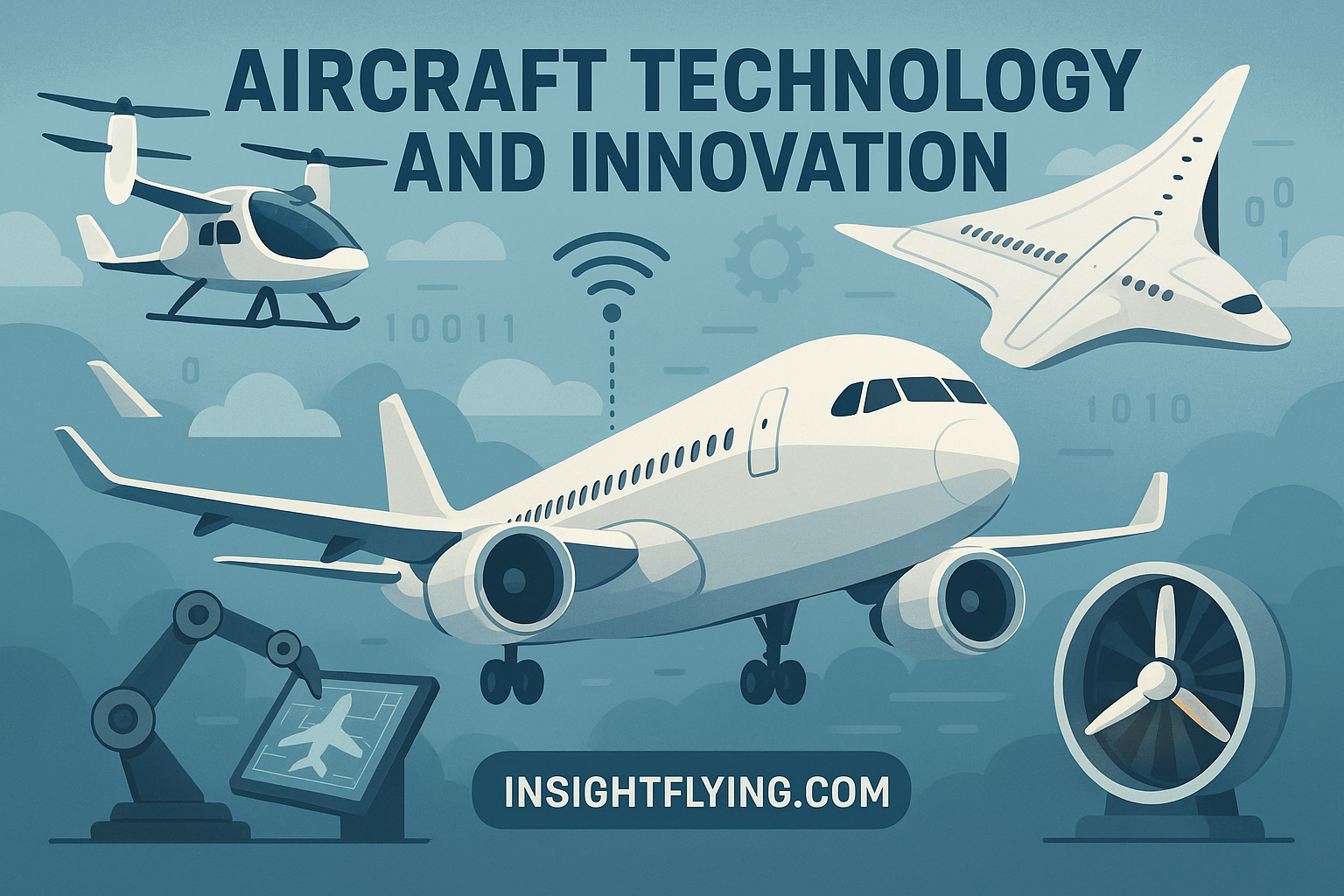อัปเดตเทคโนโลยีการบิน ปี 2025–2026
1. Electric Vertical Take-Off and Landing (eVTOL) & Urban Air Mobility (UAM)
Governments and regulators are accelerating pilot programs for eVTOLs. The FAA is testing public-private partnerships to ensure safety before certification. (Reuters)
Benefits:
- Faster urban mobility
- Lower noise and emissions
- New infrastructure for low-altitude air traffic
2. Artificial Intelligence, Machine Learning & Big Data
AI supports predictive maintenance, demand forecasting, customer service automation, and crew scheduling. (FlightAPI)
3. Biometrics & Digital Identity
Biometric gates, mobile IDs, and digital credentials reduce airport waiting time while improving security. (Future Travel Experience)
4. Robotics & Automation
Autonomous baggage vehicles, drones for aircraft inspection, and smart ramp systems are being tested in major airports.
5. Sustainable Aviation & New Fuel Technologies
Airbus is sketching radical new single-aisle designs with folding wings and open-fan engines. SAF (Sustainable Aviation Fuel) continues to gain traction. (Business Insider)
6. Connectivity & Digital Twins
6G-based communication systems and “digital twin” aircraft simulations will enhance safety, planning, and maintenance.
7. Supersonic Travel
Boom Supersonic’s XB-1 has broken the sound barrier, reviving commercial supersonic ambitions. (Wikipedia)
8. Safety Enhancements
- EMAS (Engineered Materials Arresting Systems) prevents overruns. (People)
- Virtual Co-Pilots powered by AI provide single-pilot support.
Impact on Thailand
- Airports may need new eVTOL pads and low-altitude ATC.
- Regulations must cover biometrics, noise, and safety standards.
- Thai aviation startups can join global innovation networks.
Thai Version 🇹🇭
1. ยานบินไฟฟ้าแนวดิ่ง (eVTOL) และการขนส่งทางอากาศในเมือง (UAM)
รัฐบาลและหน่วยงานกำกับดูแลเร่งโครงการนำร่อง eVTOL โดย FAA ของสหรัฐฯ เริ่มทดลองร่วมกับเอกชนเพื่อทดสอบความปลอดภัยก่อนการรับรอง (Reuters)
ประโยชน์:
- การเดินทางในเมืองรวดเร็วขึ้น
- ลดเสียงและการปล่อยมลพิษ
- ต้องสร้างโครงสร้างพื้นฐานใหม่ เช่น ลานขึ้น-ลง eVTOL และระบบควบคุมการจราจรทางอากาศระดับต่ำ
2. ปัญญาประดิษฐ์ (AI), Machine Learning และ Big Data
AI ถูกนำมาใช้ในงานซ่อมบำรุงเชิงคาดการณ์ การพยากรณ์ความต้องการ การบริการลูกค้าอัตโนมัติ และการจัดตารางลูกเรือ (FlightAPI)
3. ไบโอเมตริกซ์และตัวตนดิจิทัล
การใช้ประตูไบโอเมตริกซ์, Mobile ID และ Digital Credential ช่วยลดเวลารอที่สนามบิน และเพิ่มความปลอดภัยของข้อมูล (Future Travel Experience)
4. หุ่นยนต์และระบบอัตโนมัติ
มีการทดลองใช้รถลากอัตโนมัติ, โดรนตรวจสอบเครื่องบิน, และระบบ Smart Ramp ในสนามบินใหญ่ทั่วโลก
5. เทคโนโลยีการบินอย่างยั่งยืน & เชื้อเพลิงใหม่
Airbus เตรียมออกแบบเครื่องบินลำตัวแคบใหม่ พร้อมปีกพับได้และเครื่องยนต์ open-fan ในอนาคต ขณะที่ SAF (Sustainable Aviation Fuel) ได้รับความสนใจเพิ่มขึ้น (Business Insider)
6. การเชื่อมต่อและ Digital Twin
เทคโนโลยีสื่อสารยุค 6G และ “Digital Twin” ของเครื่องบินจะช่วยเพิ่มความปลอดภัยและการบำรุงรักษาอย่างมีประสิทธิภาพ
7. การเดินทางเหนือเสียง (Supersonic)
Boom Supersonic รุ่น XB-1 ทำการบินทะลุกำแพงเสียงแล้ว ถือเป็นก้าวสำคัญของการกลับมาของเที่ยวบินเชิงพาณิชย์ความเร็วเหนือเสียง (Wikipedia)
8. การพัฒนาความปลอดภัย
- EMAS (Engineered Materials Arresting Systems) ใช้หยุดเครื่องบินเมื่อวิ่งเลยรันเวย์ (People)
- Virtual Co-Pilot ที่ใช้ AI ช่วยนักบินคนเดียว ลดโอกาสความผิดพลาด
ผลกระทบต่อประเทศไทย
- สนามบินไทยอาจต้องพัฒนาลานขึ้น-ลง eVTOL และระบบจราจรทางอากาศระดับต่ำ
- ต้องออกกฎหมายรองรับไบโอเมตริกซ์ เสียง และมาตรฐานความปลอดภัย
- สตาร์ทอัพด้านการบินของไทยสามารถเข้าร่วมเครือข่ายนวัตกรรมระดับโลกได้
